Best Things To Do In Hiroshima

Hiroshima Peace Memorial Museum and the Atomic Bomb Dome are a symbol of peace that remains as it was at the time of the atomic bombing. The Peace Memorial Park is a lush green symbol of Hiroshima that attracts many visitors from around the world.
Both Hiroshima Castle and Orizuru Tower, give you a view of the whole city from the observation decks. And don’t forget the beautiful Shukkeien garden and world-famous Miyajima island.
Let us show you the best attractions and things to do in Hiroshima.
Peace Memorial Park
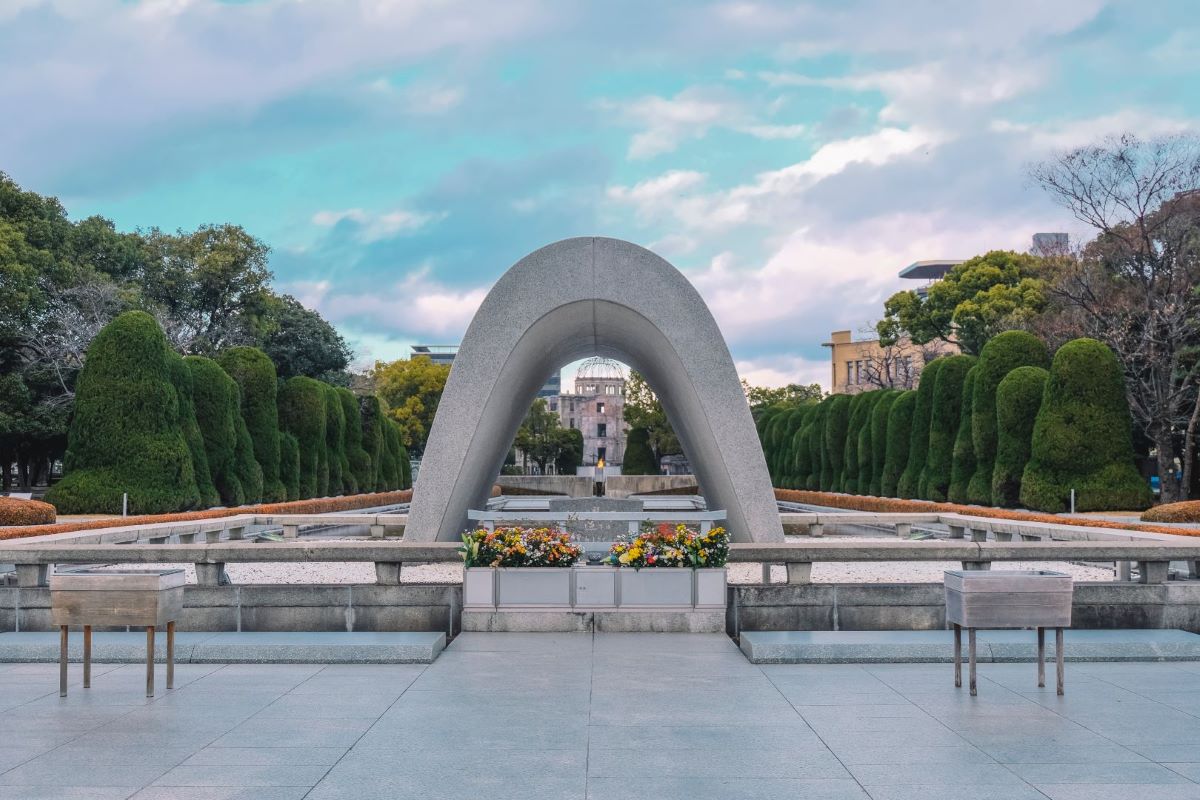
At 8:15 a.m. on August 6, 1945, the first atomic bomb was dropped on the city of Hiroshima. The first atomic bomb was dropped on the city of Hiroshima.
Peace Memorial Park, which stretches near the hypocenter, is a lush green area surrounded by the Motoyasu River and the old Ota River (Honkawa River).
The park is home to the A-bomb Dome and other monuments and is visited by many people from all over the world as a center for lasting peace.

Seventy years have passed since “that day,” and the park has become a place of relaxation for the citizens of the city. Let’s visit this important place that should be seen at least once in this time of peace.
Address: 1, Otemachi 1-10, Nakajima-cho, Naka-ku, Hiroshima
Access: 16 min. from JR Hiroshima Stn. on the Hiroshima Electric Railway Hiroden Line bound for Miyajima-guchi, 5 min. walk from Atomic Bomb Dome-mae stop
2. The Atomic Bomb Dome
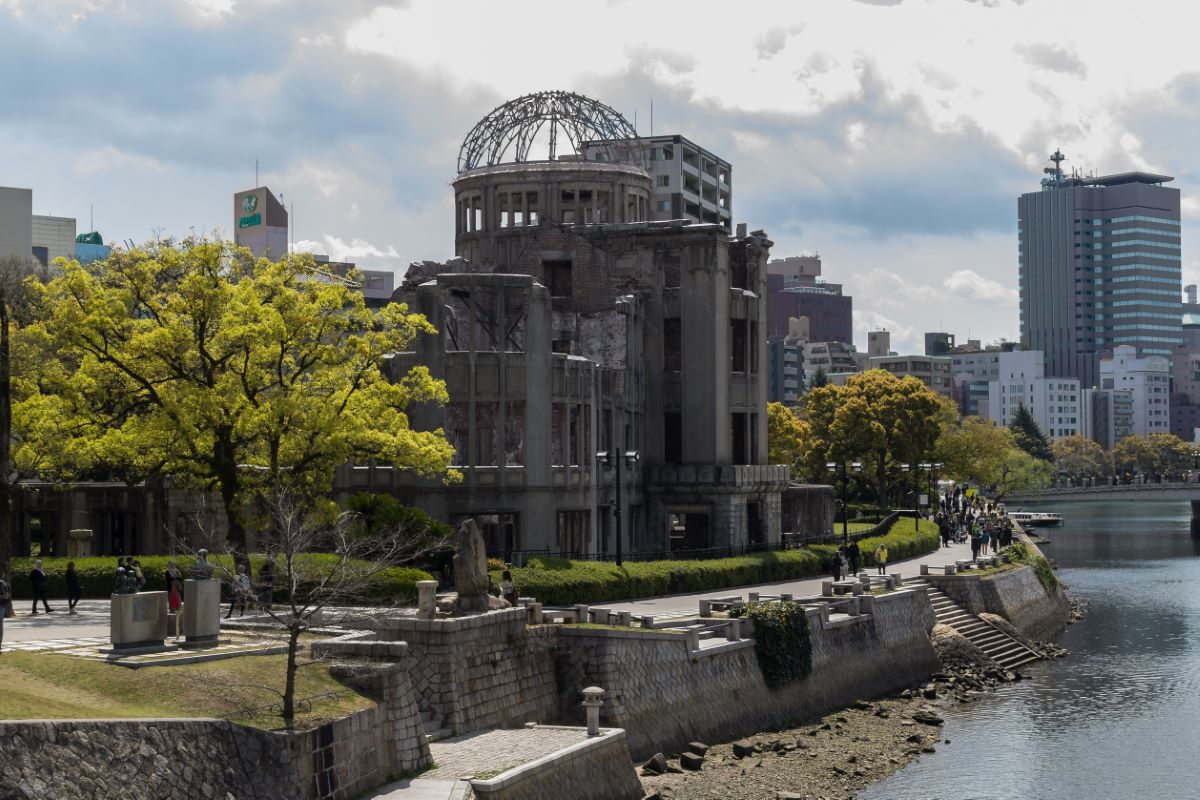
Designed by Czech architect Jan Retl and opened in 1915, the dome was hit by the atomic bomb on August 6, 1945, only 160 meters away from the hypocenter.
Because the blast came from almost directly above the dome, a part of the wall was spared from collapse, and it still retains the appearance it had at the time of the atomic bombing.
The A-bomb Dome was designed with many windows, so it is said that it was able to keep its current state even after being exposed to the tremendous blast.
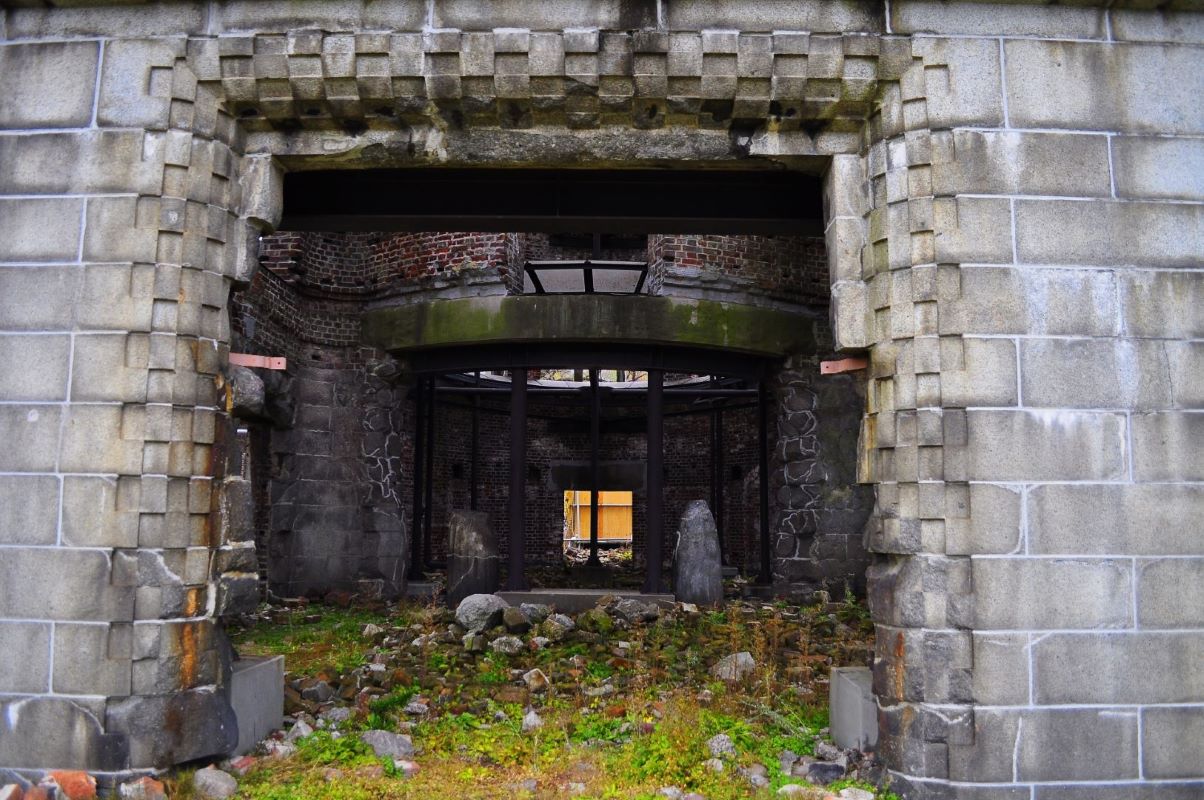
The A-bomb Dome was registered as a World Heritage Site in 1992. In recent years, some of the walls were found to be weak against earthquakes, and reinforcement work is being undertaken to keep the structure in place.
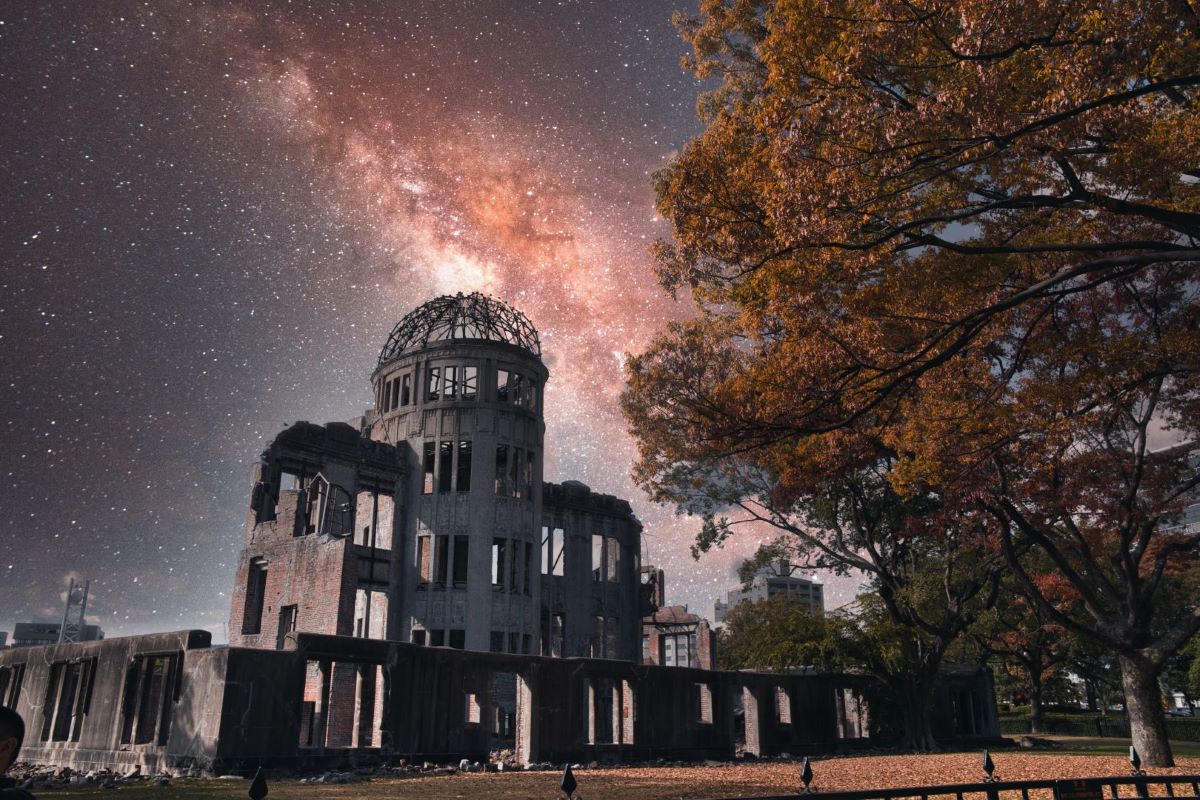
The A-bomb Dome is illuminated at night. The Atomic Bomb Dome can be seen from afar, but the atmosphere is different from that of the daytime, reminding us of the realistic scenery of the time.
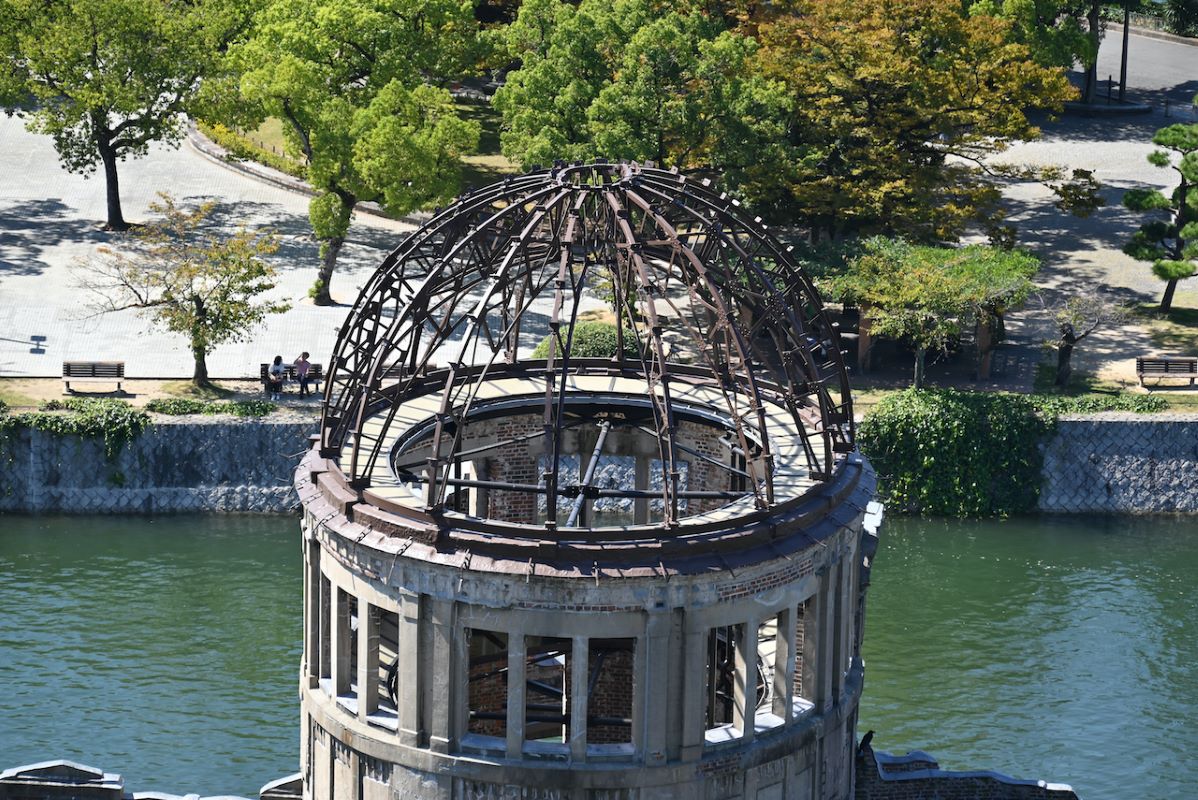
A river flows next to the A-bomb Dome, and there are places to enjoy a meal or a café by the river. You can also visit the area together with Hiroshima Peace Memorial Museum.
If you want to learn about history, we recommend that you visit Hiroshima Peace Memorial Museum first to learn about the war and the atomic bombing, and then visit the Atomic Bomb Dome.
Address: Otemachi, Naka-ku, Hiroshima City, Hiroshima Prefecture
Statue of the Children of the Atomic Bomb
Many paper cranes are deposited at the statue, which is filled with prayers
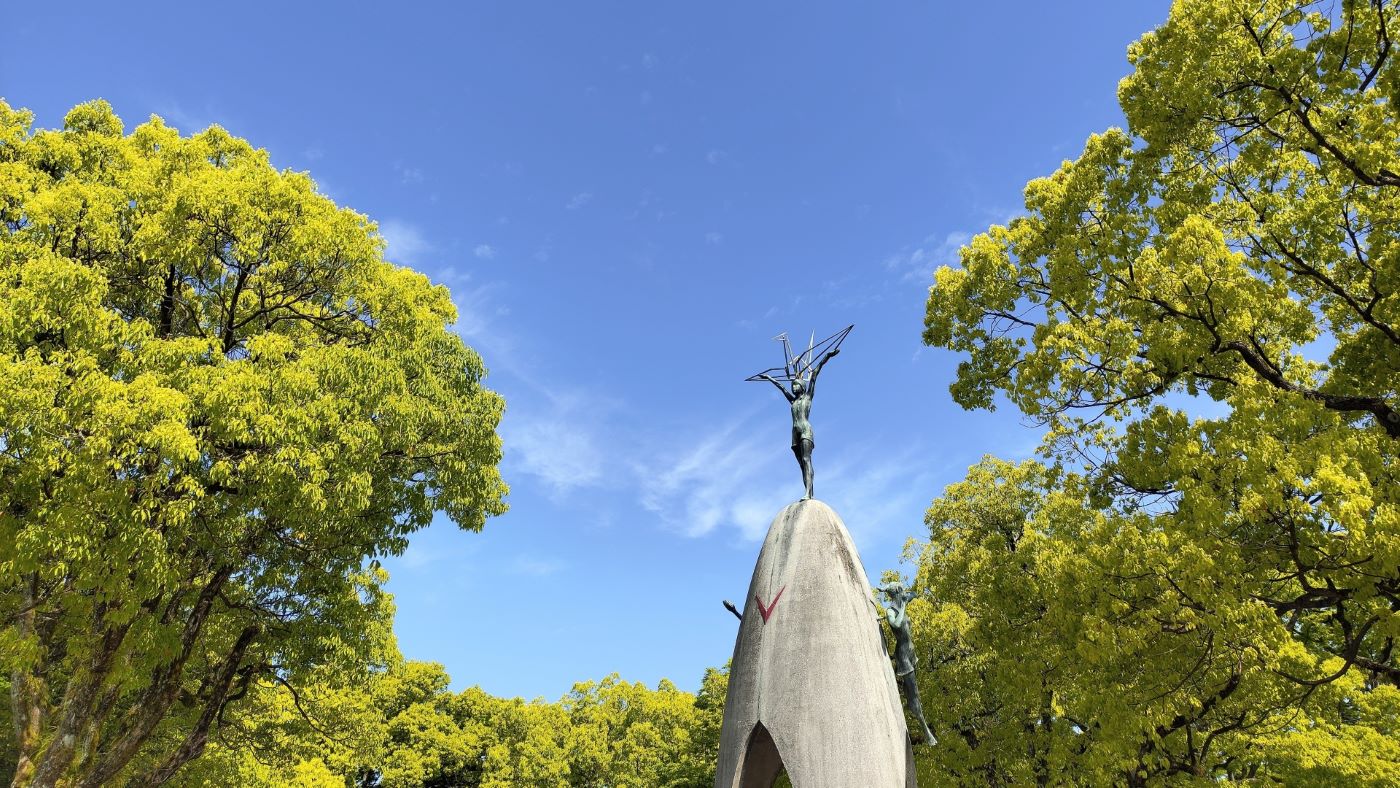
The statue is located in Hiroshima Peace Memorial Park in Hiroshima City, Hiroshima Prefecture, and is also called the “Tower of a Thousand Paper Cranes” because many thousand paper cranes are offered throughout the year.
The model for the statue is Sadako Sasaki, a young girl who developed leukemia at the age of 12 as a result of the atomic bombing and died after a battle with the disease.
Her death triggered a nationwide fund-raising campaign, and the statue was installed in 1958 as a memorial to the children who lost their lives in the atomic bombing and a prayer for peace.

In addition to tourists, the Children’s Peace Monument is visited by many students on school excursions and social tours.
Address: 1 Nakajimacho, Naka-ku, Hiroshima City, Hiroshima Prefecture
Orizuru Tower
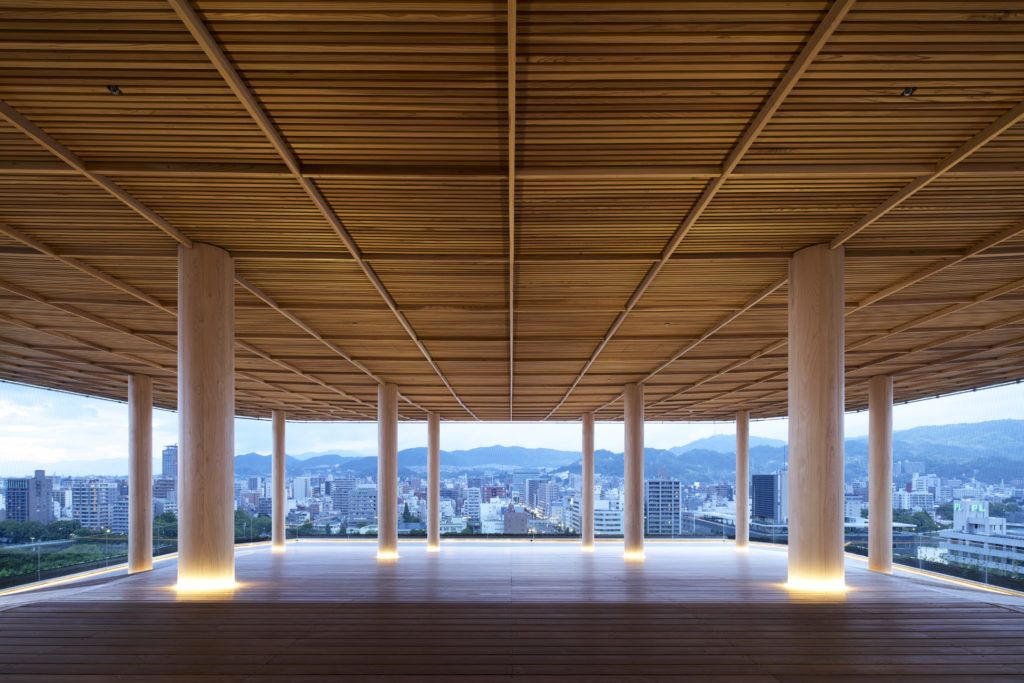
This tower building was built in 2016 right next to the Atomic Bomb Dome. The observatory, which stretches 50 meters above the ground, offers an open and breezy new atmosphere with a large panoramic view. The observatory is also a rare spot where visitors can view the Atomic Bomb Dome from above.

Atomic Bomb Dome and paper cranes that can be folded inside the museum
With digital content, exhibitions, and a wall where visitors can fold paper cranes, this is a place where visitors can experience and enjoy peace and Hiroshima all over again. There is also a café and a souvenir store.
The 20-meter-high “Wall of Origami Cranes” is very famous.
The observatory requires an admission fee (1,700 yen for adults / 900 yen for junior high and high school students / 700 yen for elementary school students / 500 yen for children 4 and older).
Ring The Peace Bell At The Peace Memorial Park

The bell is a permanent installation in Peace Memorial Park in Naka Ward, Hiroshima City, Hiroshima Prefecture, and was erected in 1964 with the wish for anti-nuclear and lasting peace.
Any visitor to the park is free to strike the bell. It was designed by Masahiko Katori, a living national treasure, and has a map of the world without borders carved under its domed roof, which is reminiscent of outer space.
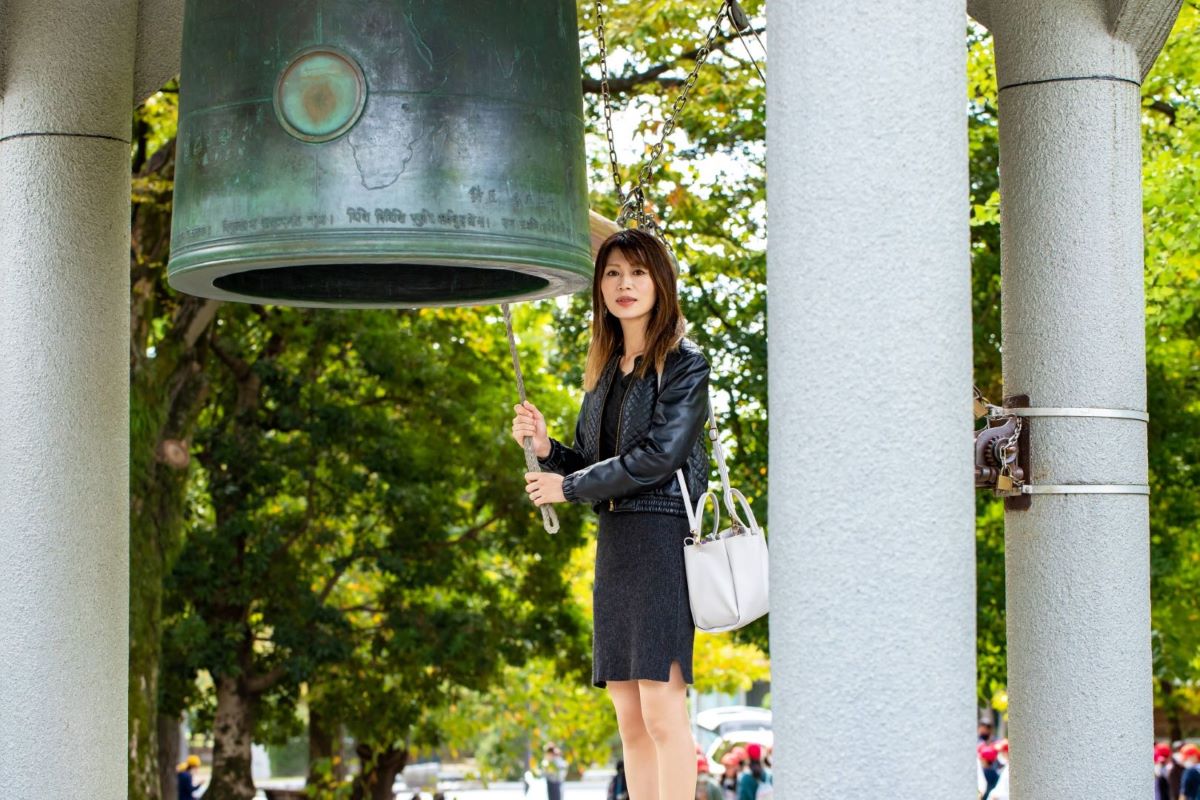
There are other bells in the park: the bell that is struck during the Peace Memorial Ceremony on August 6 is on display in the East Wing of Peace Memorial Museum, and the Peace Clock Tower, a bell that rings at 8:15 every morning, is also located in the park.
Hiroshima Castle
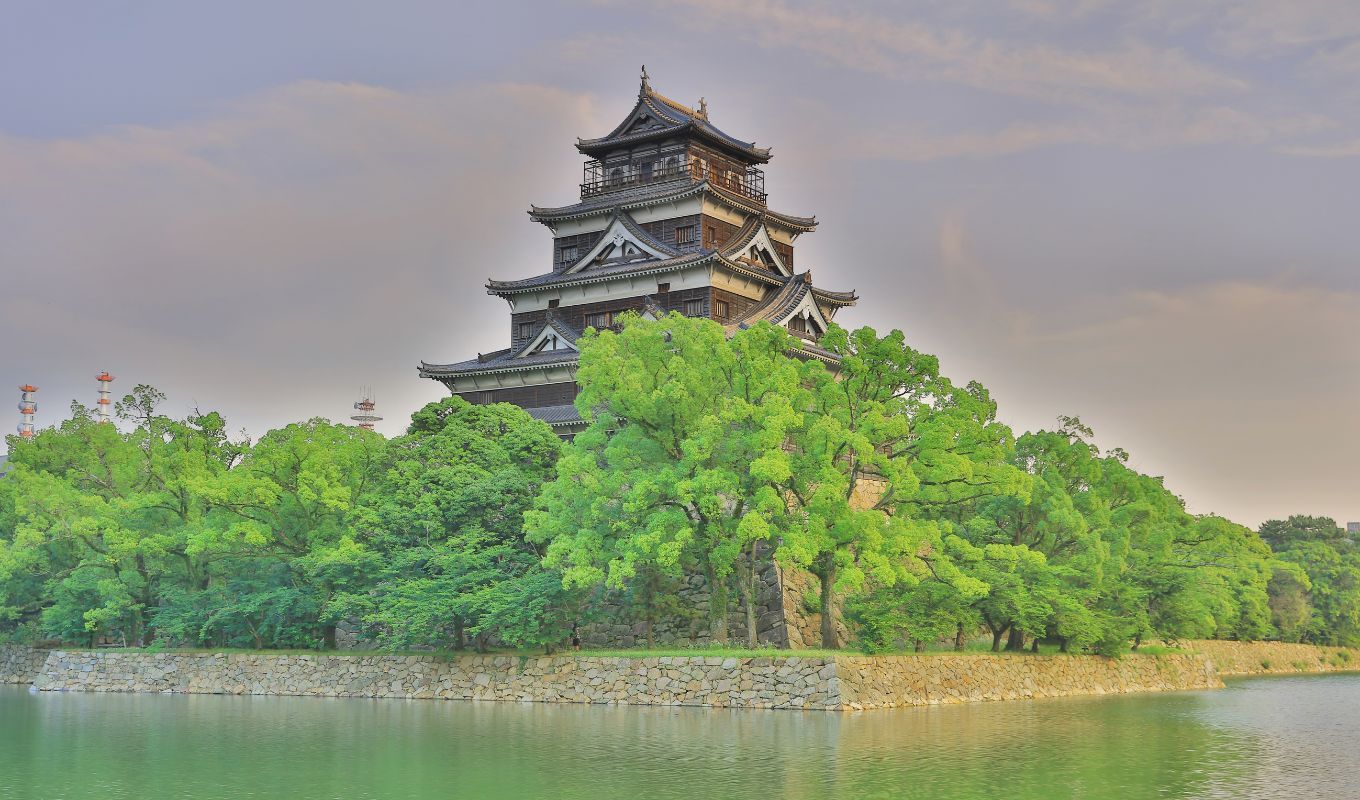
Hiroshima Castle was built in 1589 by the warlord Terumoto Mori. The castle tower was completely destroyed by the atomic bomb in 1945 but was rebuilt in 1958.
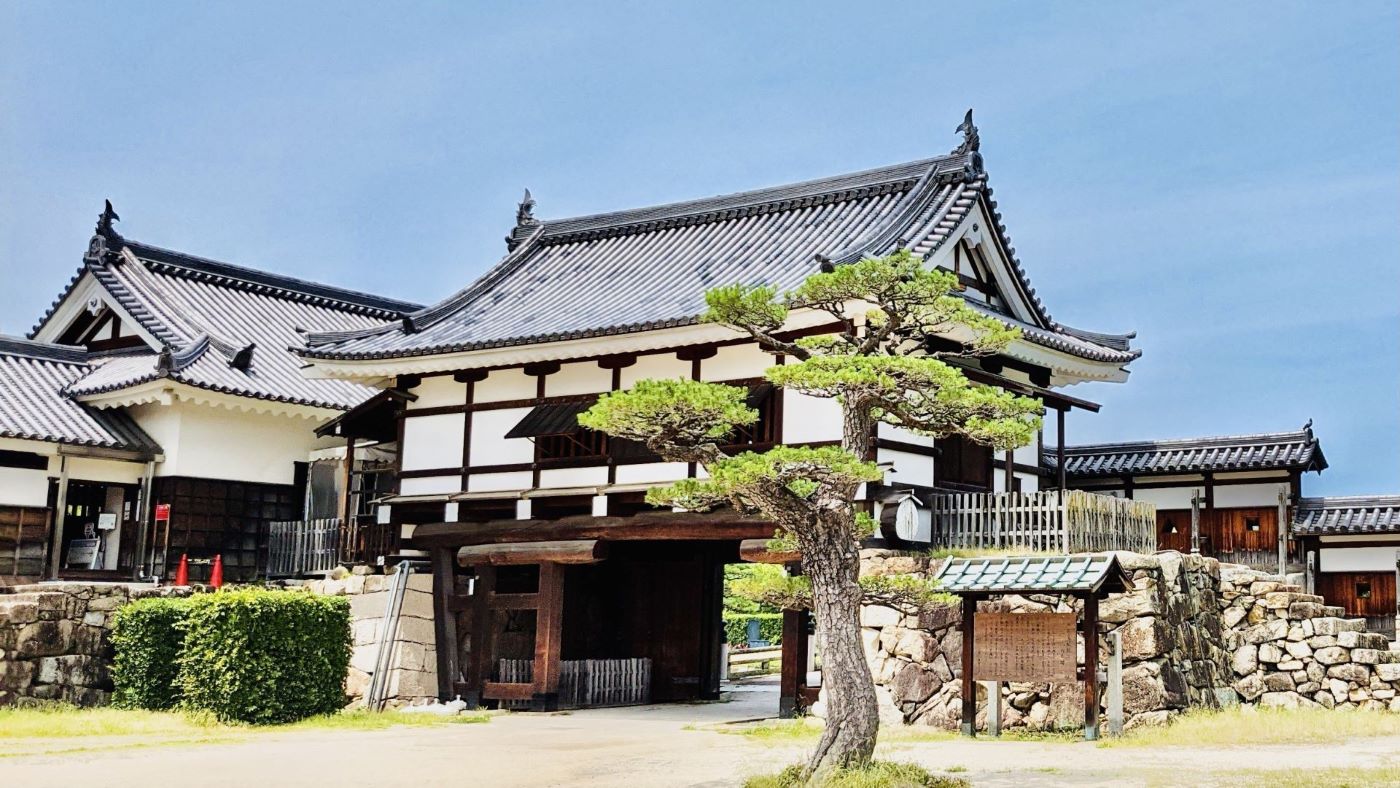
The castle is a five-story building, and from the fifth floor, the uppermost level, one can see not only the city of Hiroshima but also Miyajima Island in the distance on a clear day.
Hiroshima Castle was named after a place in what is now western Hiroshima called “Koi” (carp), and the same-sounding carp became the animal that symbolizes Hiroshima.

For this reason, Hiroshima Castle is also known as Koi-jo or Carp Castle. Incidentally, the name of Hiroshima’s professional baseball team, the Hiroshima Toyo Carp (Carp), was chosen because Hiroshima Castle was called Koi Castle and the carp is a powerful and auspicious fish for success in life.
Access: Tram from Hiroshima Station South Exit, get off at “Kamiyacho Higashi” or “Kamiyacho Nishi” and walk about 15 minutes to the north.
Shukkeien Garden
A well-maintained garden that is like a different world

Located in Naka Ward, Hiroshima City, Hiroshima Prefecture, this garden has been selected as one of the 100 best places of scenic beauty in Japan and one of the 100 best historical parks in Japan.
The garden was originally a daimyo’s garden created in 1620 by Muneyoshi Ueda, a retainer of the Asano clan known as a tea master, as a villa for the lord of the Asano clan.

The garden has a pond with a floating island, a small mountain, a ravine, and a tea house built in the sukiya style, all of which are arranged in a scenic layout.
At Sensui-tei near the entrance, visitors can enjoy powdered green tea sets and light meals.
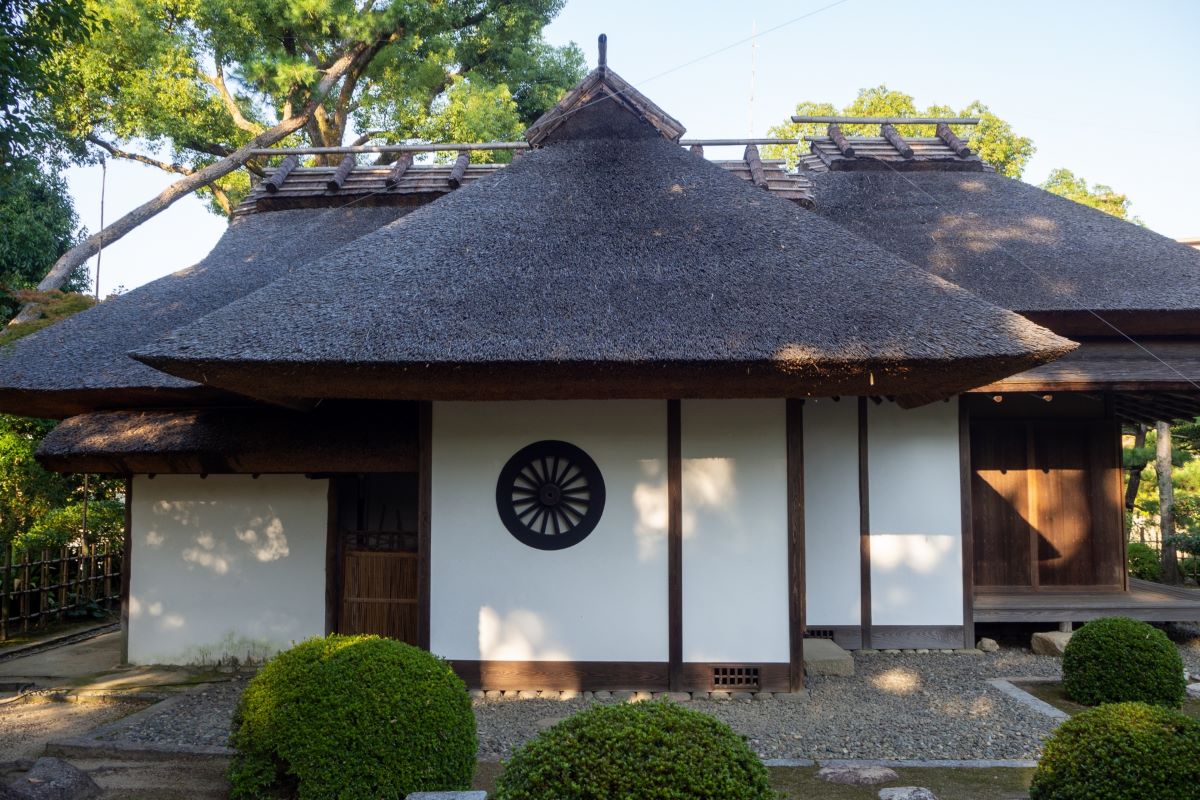
Business hours: 9:00-18:00 (Visitors may enter the garden up to 30 minutes before closing time)
Admission: 260 yen for adults, 150 yen for kids
Hiroshima Museum Of Art

The theme of the Hiroshima Museum of Art is “For Love and Peace. The collection includes French impressionist works, modern paintings, and Japanese oil paintings. It is also known for its exhibition of reproduction of “The Garden of Daubigny,” a work Van Gogh is said to have painted within a month of his suicide.
The museum holds permanent and special exhibitions, and in the past has organized an exhibition of Machiko Hasegawa, known for her “Sazae-san” series, and an exhibition of works from the Museum of Fine Arts, Boston. Tokutoku coupons and other coupons are available for a discount on the day of your visit, so be sure to check in advance when you visit the museum!
Website: https://hiroshima-museum.jp/
Hours: 9:00-17:00 (admission until 16:30)
Access: Take the “Maple Loop (Orange Route)” sightseeing bus from JR Hiroshima Station. Get off at “Shimin Byoin Mae” and walk for 2 minutes.
Okonomimura
More than 20 yatai-style Hiroshima-style okonomiyaki restaurants line the street.
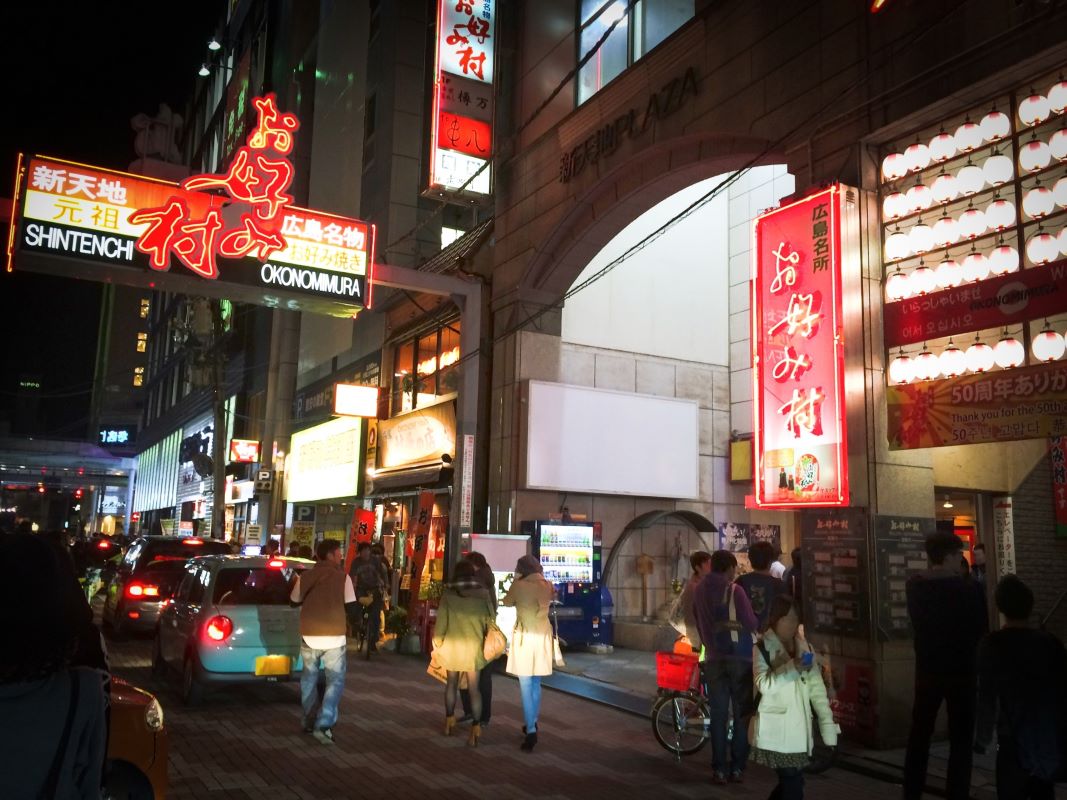
It is said to have originated from the food stalls that gathered in the city’s central plaza after the war in hopes of the reconstruction of the city, and has become a popular spot essential for sightseeing in Hiroshima.
Itsukushima Shrine
World Heritage Site Itsukushima Shrine
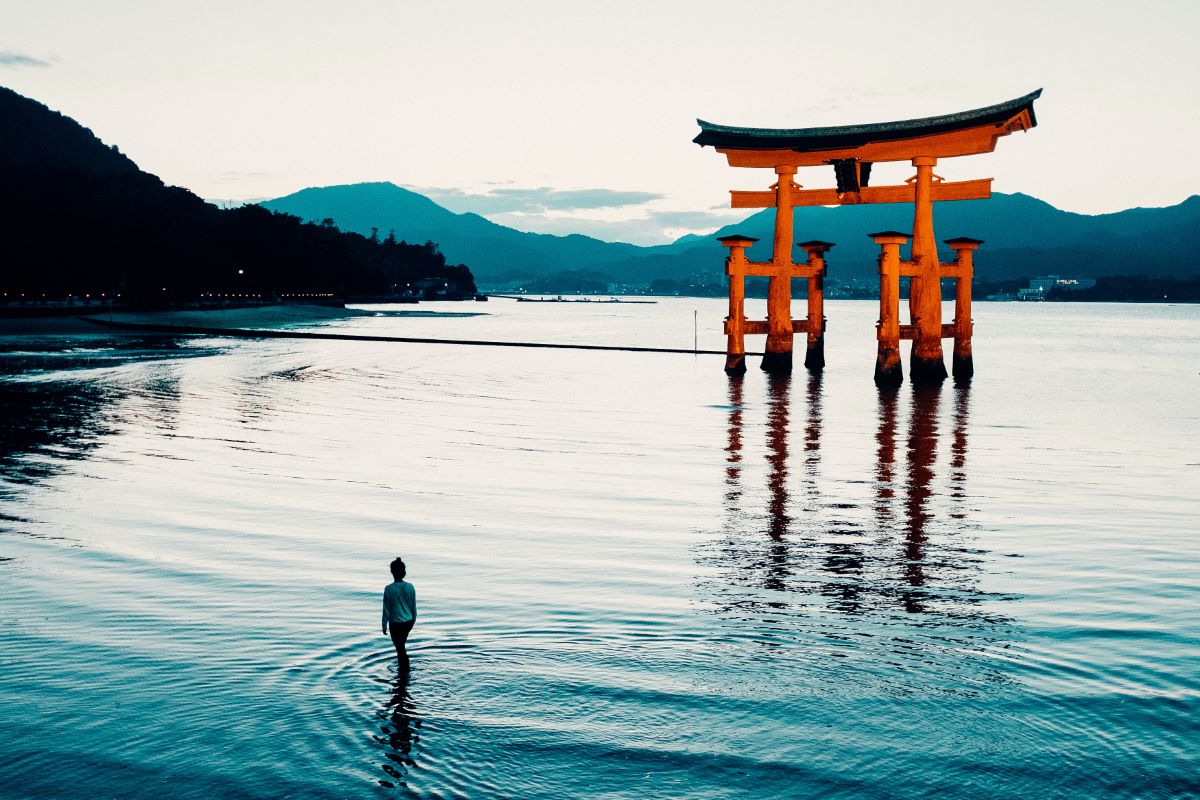
Itsukushima Shrine, a World Heritage Site, was founded in 593, and the present-style shrine pavilions were built by Taira no Kiyomori around 1168.
It is located where the tides rise and fall, so that at high tide, seawater rushes under the Otorii Gate, the shrine pavilions, and the cloisters, making the shrine appear as if it were floating on the sea from a distance.

The shrine pavilions are designated National Treasures and Important Cultural Properties and are of great historical and cultural value.
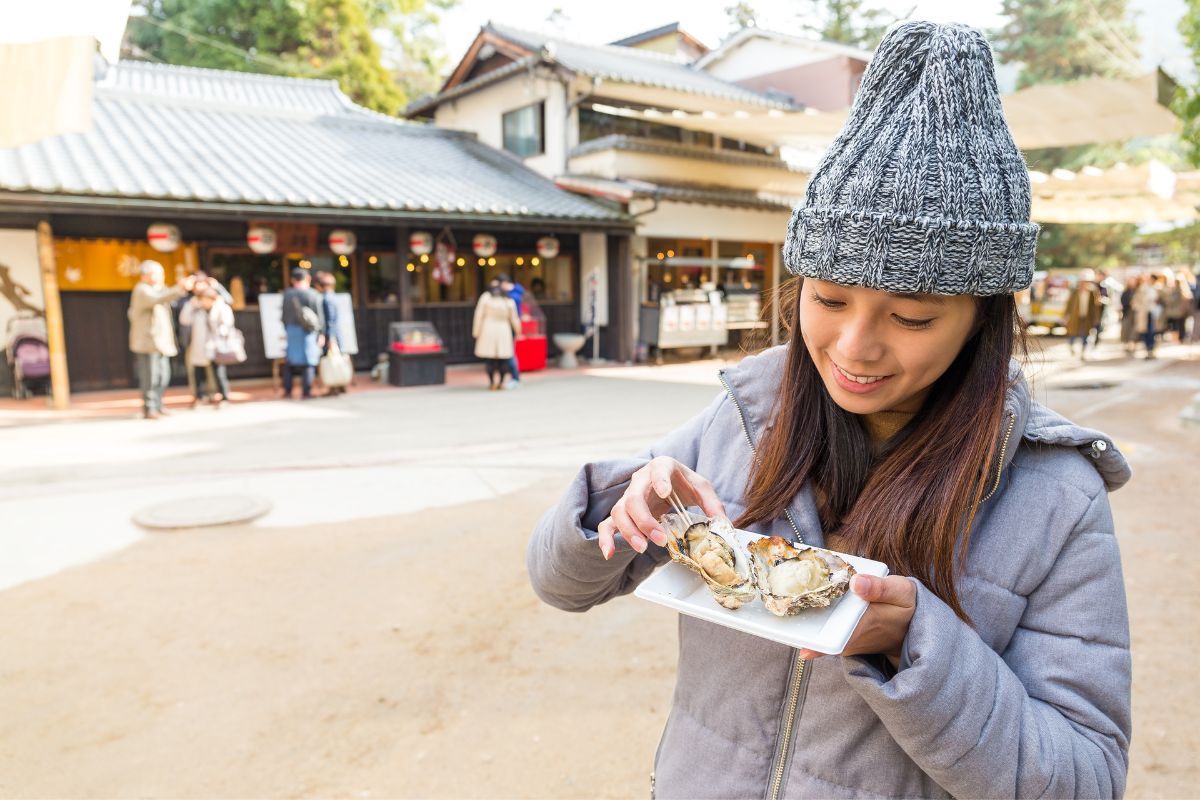
Miyajima, where Itsukushima Shrine is located, is reached by ferry, and the approach to the shrine is lined with about 70 restaurants and souvenir stores, where visitors can enjoy oysters and momiji manju, a local specialty.
Fees: Adults: 300 yen, High school students: 200 yen, Younger: 100 yen
Access: 10 minutes by ferry from the pier in front of “Miyajima-guchi Station” of JR Sanyo Line or “Hiroden Miyajima-guchi Station” of Hiroshima Electric Railway. 15 minutes on foot from the Miyajima Pier.
Site URL
http://www.itsukushimajinja.jp/
Go To Top Of Mount Misen
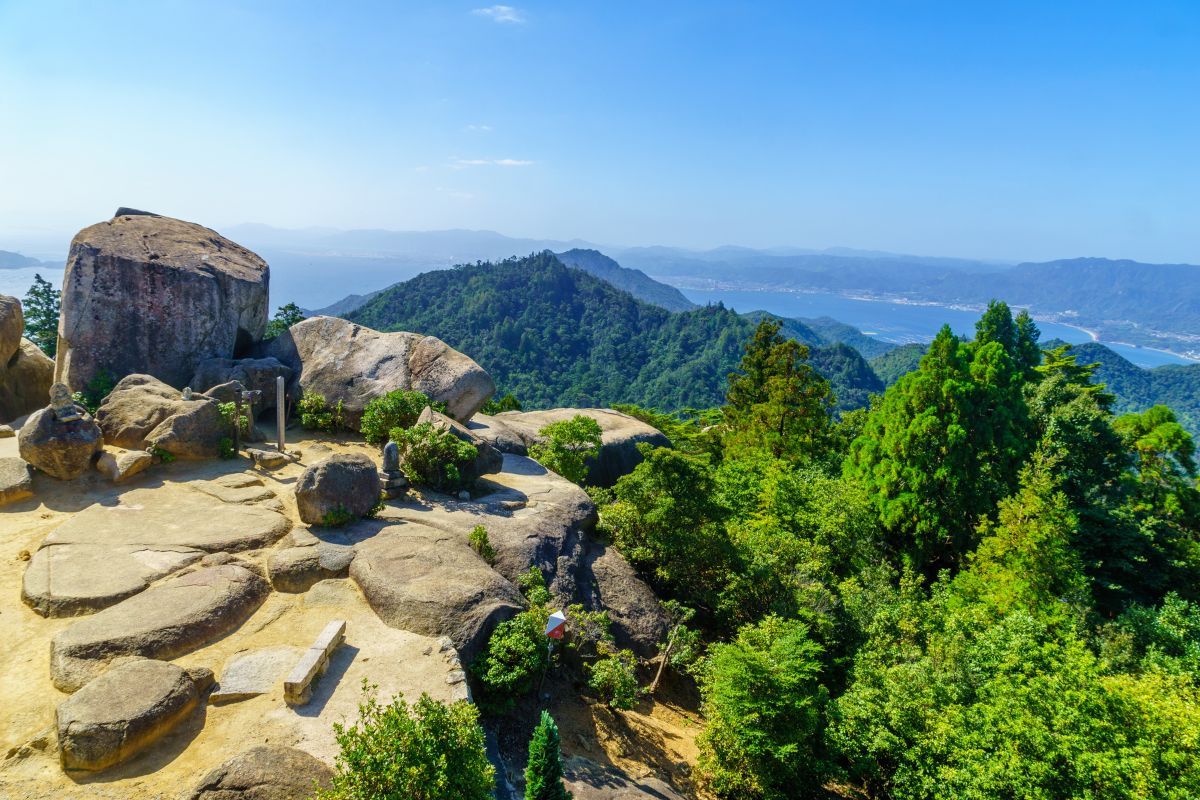
Since Kobo Daishi founded the mountain 1,200 years ago, Mount Misen has been revered as the sacred mountain of Miyajima.
With its primeval forests and mysterious spots registered as a World Heritage site, it is attracting attention as a power spot.
Many people visit the mountain for the spectacular view from the summit and for the blessings it offers.
Address: Miyajima-cho, Hatsukaichi City, Hiroshima
Access: 25 min. walk from Miyajima Pier to Momijidani Station, 25 min. on the Miyajima Ropeway to Shishiiwa Station, 30 min. walk (to the summit observation deck)
Hours: 9:00 – 17:00 for the Miyajima Ropeway (varies according to season)
Miyajima Aquarium
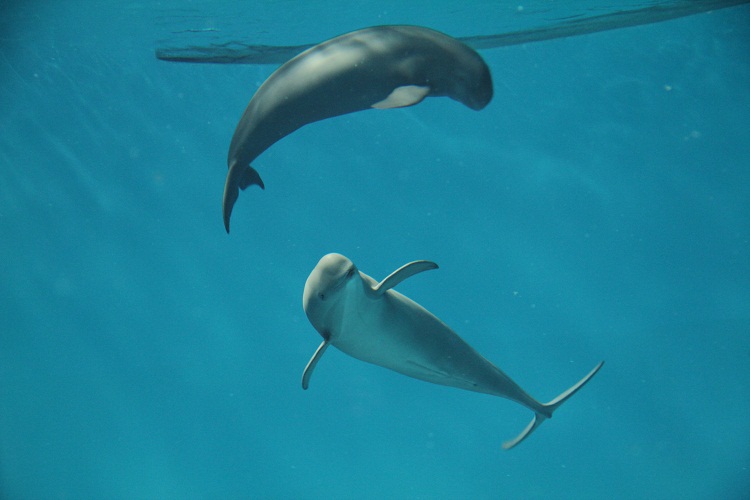
The Miyajima Aquarium is home to more than 13,000 aquatic creatures of 350 species, including snapping turtles and Humboldt penguins, which have become the symbol of the aquarium. 3 to 4 times a day, live sea lion shows are very popular.
Access: 10 min. on the Maple Liner bound for Miyajima Aquarium from Miyajima Pier, a short walk from the last stop Operating
Hours: 9:00 – 16:00 (closing at 17:00)
Website: https://www.miyajima-aqua.jp/english/
MAZDA “ZOOM-ZOOM” Stadium
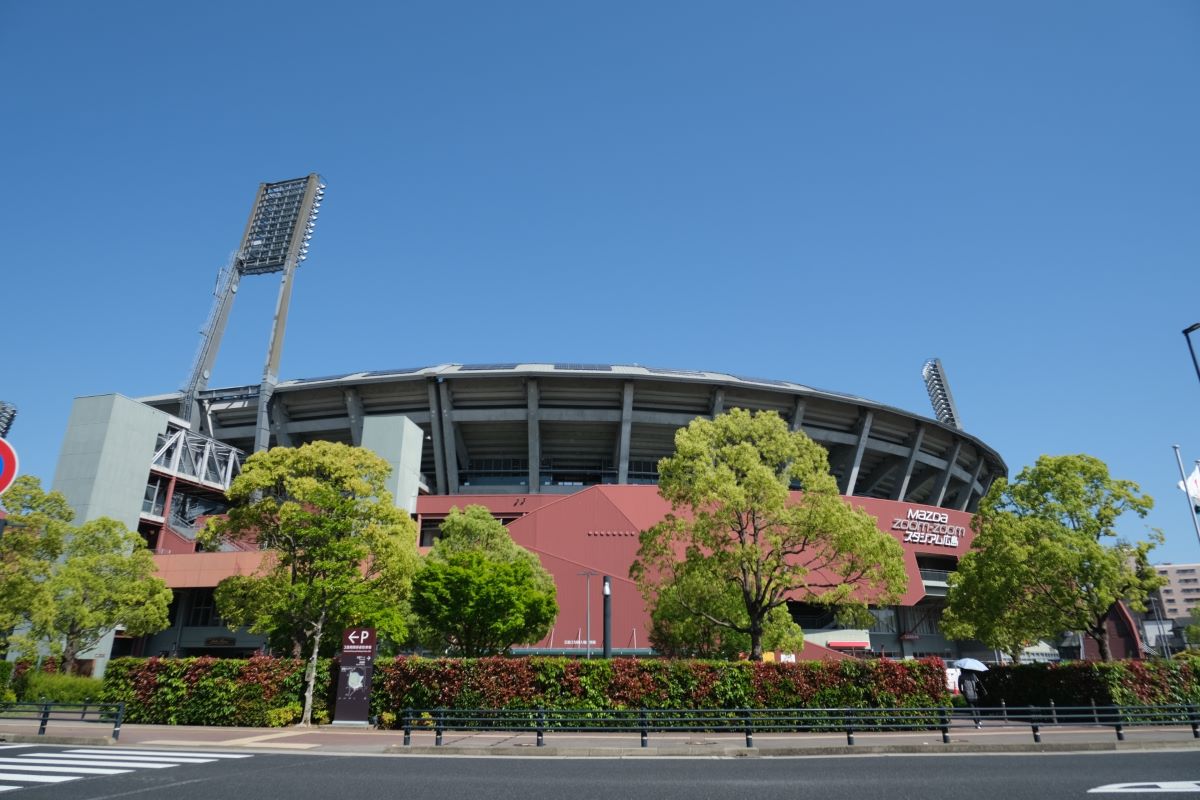
This is a sacred place for Hiroshima Carp fans. As a place where professional baseball games are held, many locals come to cheer enthusiastically at every game.
It is a very beautiful stadium that has just been changed from the Municipal Stadium, and it is said that it is difficult to obtain tickets unless you are a local.

The stadium is open from 10:00 a.m. to 4:00 p.m., so be sure to arrive early. There are also limited-edition goods that cannot be purchased on the Internet, so this is a fun place to visit even if you are not a Carp fan.
You will be amazed at the energy of the local fans, and the variety of seating options, including BBQs and seats that allow you to see the game from the same vantage point as the benches, are just one of the many things to look forward to at Stadium Hiroshima.

You will definitely want to join in with the fanatical home crowd and sing “Carp, Carp, Carp Hiroshima Hiroshima Hiroshima!”.
Address: 2-3-1 Minami-Kagiya, Minami-ku, Hiroshima City, Hiroshima Prefecture
Official and related website URL: http://www.mazdastadium.jp/
Peace Boulevard

Peace Boulevard is a 4-km street that runs east to west through the center of Hiroshima City and has been selected as one of the 100 best roads in Japan. It is a street with many tourist attractions such as the Peace Memorial Park and commercial facilities.
Feel The Serenity At Mitaki Temple

Mitaki-dera Temple is a great place to feel the nature of Hiroshima, especially in the autumn when the leaves change color.
There are several streams within the temple grounds, and the sound of water never ceases.
The freshwater from Mitaki-ji Temple is known as the best in the City and is used as the water offering at the Peace Memorial Ceremony every year.
The pagoda which is dedicated to the souls of the victims of the atomic bombing, houses a wooden seated Amida Nyorai statue, an important cultural property of Japan, and is open to the public once a year in November.
The temple is a place of tranquility and peaceful prayer that one would not expect to find in the city. It is easily accessible from Hiroshima Station, only three stops away, so why not visit?
Address: 411 Mitakiyama, Nishi-ku, Hiroshima City, Hiroshima Prefecture, 733-0805
Access: 15 min. walk from Mitaki Sta. on JR Kabe Line.
Hiroshima Museum Of Art
A wide range of modern works, mainly French Impressionist paintings
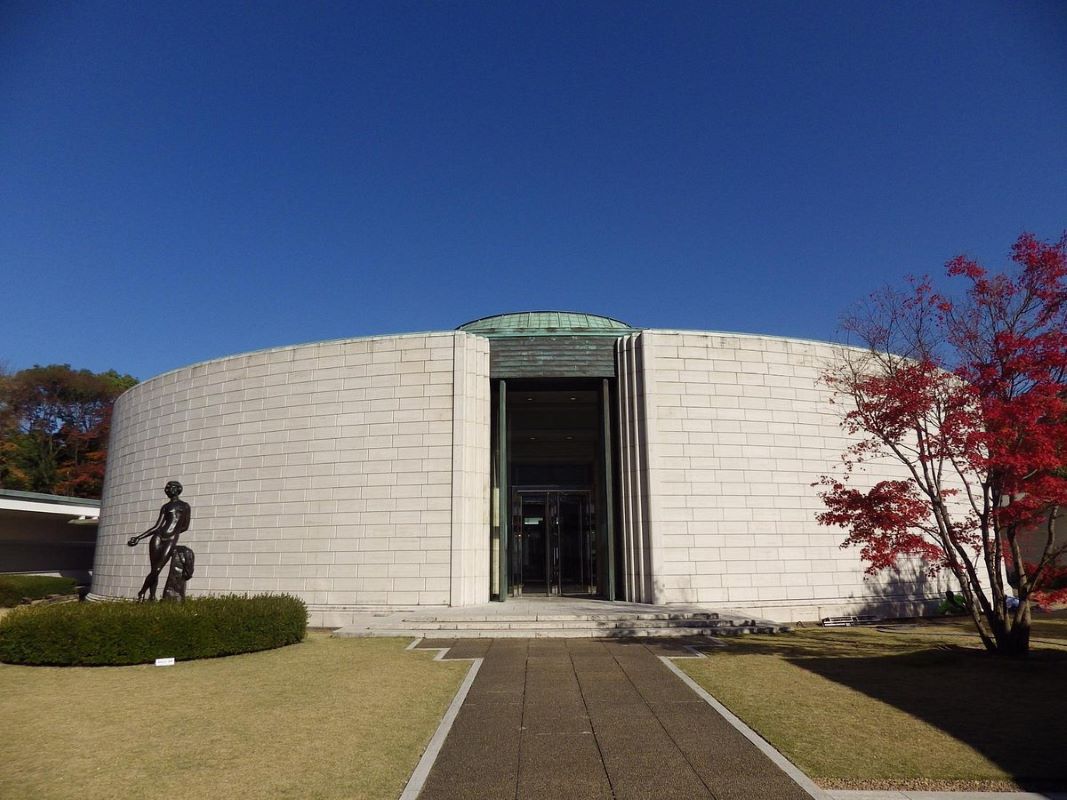
The Hiroshima Museum of Art has an extensive collection of modern artworks centering on French Impressionists, including Van Gogh, Cézanne, Manet, and Renoir.
The museum has a collection of about 300 works of modern art, including a collection of Japanese modern art.
In addition to a permanent collection of about 80 pieces of French modern art, special exhibitions are held several times a year. The museum also has a museum store and a stylish café overlooking the courtyard.
Address: 3-2 Motomachi, Naka-ku, Hiroshima City, Hiroshima Prefecture
Hours: 9:00-17:00 (last admission at 16:30)
Hiroshima City Forest Park
This is a great spot for families with easy access to Hiroshima City. Children will be very happy to visit the Insectarium, where butterflies fly around all year round, and where they can interact with beetles.
There are not many visitors except for events, but it is a great place to relax and enjoy the park to the fullest. There is also a plaza where you can barbecue, enjoy cherry blossom viewing in the spring, and view the changing leaves in the fall.
The admission fee is only 200 yen, so it is really recommended for those who want to have a lot of fun at a reasonable price. Many local families also visit the park.
Name: Hiroshima City Forest Park
Address: 173 Fujigamaru, Fukuda-cho, Higashi-ku, Hiroshima City, Hiroshima Prefecture
Official and related website URL: http://www.daiichibs-shitei.com/forest/
Eat Some Okonomiyaki: The Food Of Hiroshima
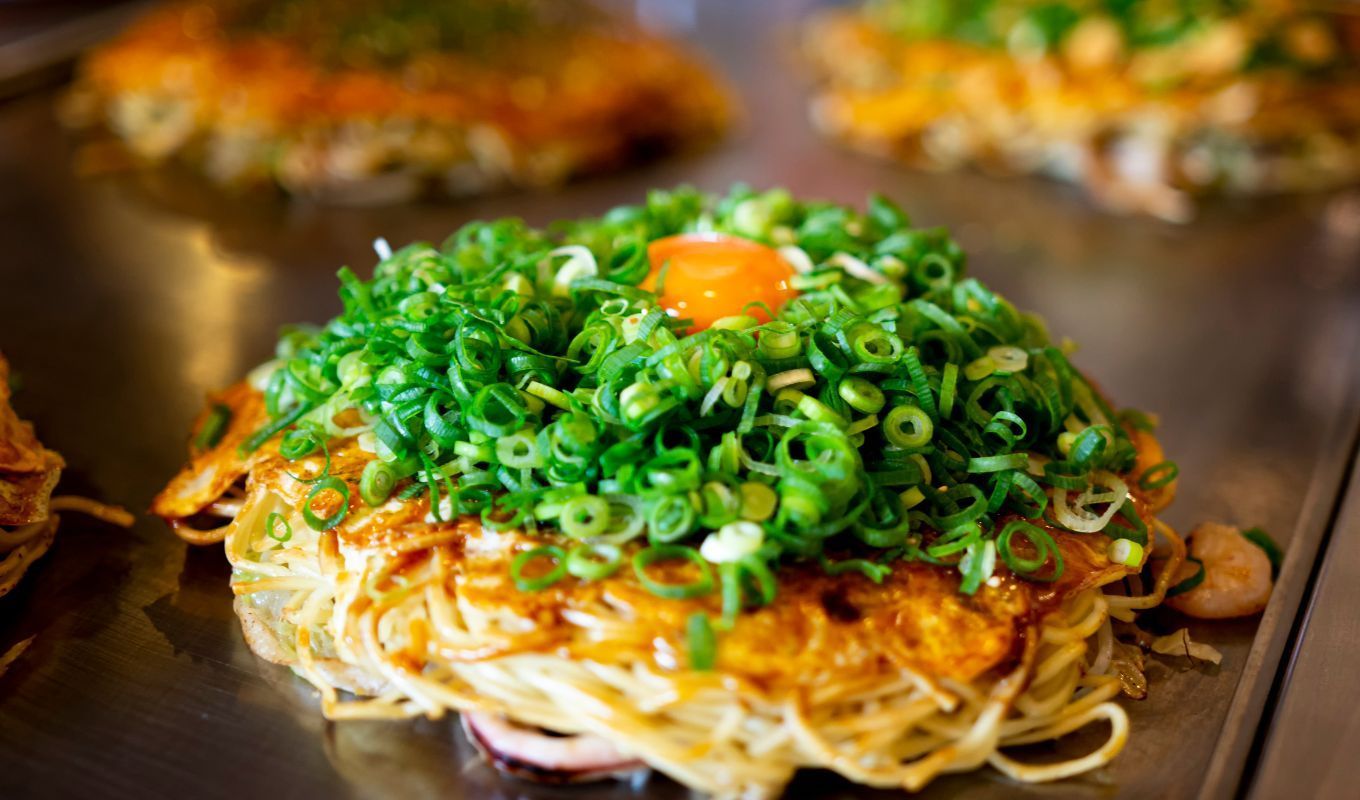
And lastly. Don’t forget to eat some Okonomiyaki.
Okonomiyaki is one of the most famous gourmet foods in Hiroshima. The characteristic of Hiroshima-style okonomiyaki is that buckwheat noodles are added to the dough, cabbage, and meat layers that are cooked.
